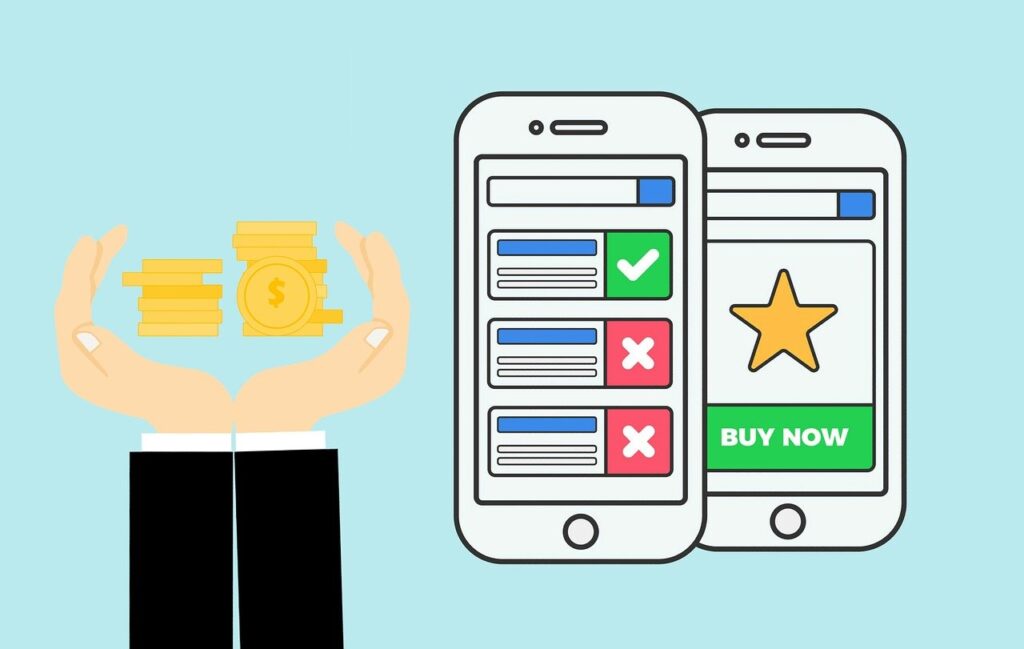Amazon to Run Shopping Ads on Snap, Walgreens Turns to Retail Stores for eCommerce Fulfillment, and More News
As expected, eCommerce giants (and smaller retailers) are getting ready to capitalize on the more lavish spending habits that accompany the upcoming holiday season. Last week, we already covered Amazon’s preparation for Black Friday and Cyber Monday. This week, we’ve seen a partnership between Amazon and Snap, as well as changes to the Buy with Prime service. Let’s dive in.
Today’s news is 1,533 words.
Amazon to Run Shopping Ads on Snap
This week, Amazon announced they struck a deal with Snap, the developer of the popular social media platform Snapchat. The deal will allow the eCommerce giant to display shopping ads to Snapchat users directly from the app.
The news comes only a week after the same deal between Amazon and Meta was disclosed for in-app ads on Facebook, Instagram, and WhatsApp.

Amazon ads will initially show to U.S.-based users only, with the view to expanding to other countries in the future.
This goes in line with Amazon’s efforts to become increasingly more prevalent on various social media platforms, which are quickly becoming the preferred option for online shopping for many. Earlier this year, Amazon announced a similar link-up with Pinterest.
After the announcement, despite Snap declining to comment on the news, the company’s value spiked by 9%, showing that people expect a largely positive outcome from the collaboration.
What does it mean for eCommerce sellers?
Once the agreement comes into effect, Snapchat users will be able to shop directly from Amazon without leaving the app. They will also see real-time prices, delivery estimates, and product details on select product ads.
The ad will display Prime availability, making it perfect for Amazon Prime users – and sellers that feature on Prime.
This news should affect the way you present your product online. With in-app shopping becoming a widespread habit among social media users, you should make sure to utilize the full power of social media marketing and prepare your product listing to look appealing in the new format.
While we still don’t know the exact layout of the new shopping ad features, it’s safe to assume it’ll differ from Amazon’s website listing, and you should stay ahead of the curve and prepare your listing in advance.
Since users can see real-time pricing and compare them with Prime products, it can become a great way to differentiate yourself with competitive prices.
MORE: 3 ways to be more effective at marketing your online store
Big Retailer News
Walgreens Turns to Retail Stores for eCommerce Fulfillment
The pharmacy giant revealed this week it’s taking a different approach when it comes to fulfilling online orders.
From now on, the company will turn to its 8,700+ drugstores and turn them into a retail outlet-fulfillment center combo. Previously, Walgreens had a dedicated warehouse for eCommerce orders only, but the warehouse is no longer functional.
This decision has come as Walgreens’s effort to increase the speed of online order deliveries, with the company encouraging same-day deliveries. In the future, third-party apps like Uber Eats, Instacart, and DoorDash will handle online orders by going to a nearby drugstore and taking the product directly from the counter.
With over 9 million daily customers and 78% of Americans living within 5 miles of a Walgreens store, utilizing physical stores as distribution networks should improve delivery times significantly.
Walgreens is not the first company to make a switch from a dedicated warehouse to retail stores. Prior to the pharmacy corporation, the likes of Target, Walmart, and CVS Health had gone down the same route.
What does it mean for eCommerce sellers?
The logistics behind online orders of Walgreens doesn’t directly impact independent eCommerce retailers. However, it’s a clear indication that more and more people are willing to buy pharmaceutical and healthcare products online.
We can expect this trend to grow in the following years, and if you’re already in the niche, you may look forward to an increased customer base. If you’re in a similar industry, such as self-care and beauty products, you should consider expanding your portfolio.
MORE: Tallow balm: Beef tallow for fat profits
Amazon Adds New Perks to Buy with Prime
At the beginning of 2023, Amazon expanded the Buy with Prime service to U.S.-based retailers.
It allowed third-party sellers to offer Prime benefits to their customers, such as free shipping and returns. As a retailer, you could include the Buy with Prime option within your own shopping app even if you didn’t use Fulfillment by Amazon (FBA) to handle shipping and storage.
This week, Amazon went a step further and launched new features to the service. As the holiday season approaches, shoppers can now track their Buy with Prime orders via Amazon’s app and website. They will also have access to 24/7 customer support.
Furthermore, the company has added additional drop-off points for returns, including UPS locations, Whole Foods, Amazon Go, and Amazon Fresh markets. Customers can use these locations and leave products without a label or box.
Many see these changes as the company’s efforts to combat competition from emerging Shein and TikTok Shop marketplaces.
What does it mean for eCommerce sellers?
If you offer the Buy with Prime option to your customers, this news may not seem as something to look forward to. You’ll need to upgrade your shipping and delivery process to include a tracking ability if you already don’t have it. You’ll also need to be able to establish 24/7 communication with Amazon’s customer service to provide timely responses to customer queries.
However, this shouldn’t discourage you from offering Buy with Prime. It’s a great way to expand your customer base. Amazon claims three out of every four Buy with Prime users come from new shoppers.
MORE: How to sell on Amazon Prime
Also in the News
- Etsy Seller Ads May Appear in Google Small-Biz Search Results. EcommerceBytes.
- Chewy Lays Off 200 Employees, Aiming to Become More Agile. PYMNTS.
International Retailer News
Etaily Receives Series A Funding to Expand in Southeast Asia
Southeast Asia saw rapid growth in eCommerce sales during the pandemic, and the trend has no plans of slowing down. According to a report by McKinsey, the market grew by 40% each year from 2016 to 2021, and experts believe it will continue to grow by 15%-25% for the next five years.
This is where Etaily comes in. Based in the Philippines, Etaily is an eCommerce enablement platform that helps global brands establish and manage their online operations in the area.
This week, the company announced it raised $17.8 million in Series A funding, aiming to expand in the area, focusing on Singapore, Malaysia, Indonesia, and the Philippines.
Etaily offers managed services, technology, and economies of scale to brands planning to enter the market. It mainly focuses on brands from the following niches:
- Consumer electronics,
- Fashion,
- Beauty,
- Home and living,
- Fast-moving consumer goods,
- Lifestyle.
What does it mean for eCommerce sellers?
Etaily’s expansion into different Southeast Asian markets can massively help any online retailer looking to capitalize on the rapid rise of eCommerce in the area.
If you want to enter the market, Etaily can help you with its market knowledge, demand forecasting, conversion optimization, and logistics. Its database collected from users can give you an insight into consumer behavior, demand, and traffic.
MORE: Online marketplaces in Southeast Asia: A unique region for eCommerce
Shanghai Reveals Plans for Silk Road eCommerce Zone
The city of Shanghai has made public its plan to establish the “Silk Road eCommerce” cooperation pilot zone. It’s an initiative that’s meant to improve trade connectivity between Silk Road countries, as well as promote digital trade and simplify cross-border online shopping.
In a press conference, Shanghai Deputy Secretary General Zhang Xiong announced a set of goals outlined in the plan. Some of the notable goals include:
- Creating a set of institutional open achievements,
- Building a set of public service platforms with common development,
- Establishing regionally distinctive carriers,
- Bringing a group of eCommerce establishments that compete internationally,
- Creating an establishment of a data trading registration service system,
- Establishing an international board for data trading.
According to Zhang, these ambitious goals are planned to be realized by 2025. The whole plan lays out 19 tasks to be accomplished to achieve three main focus areas, which are openness in the eCommerce sector, international and regional cooperation, and the creation of a pilot environment for innovation.
What does it mean for eCommerce sellers?
Shanghai is the world’s largest port, with a cargo trade of $1.43 trillion in 2022 alone. It’s also home to over 25 eCommerce platforms with transactions over hundreds of billions of yuan.
If you have already established operations in the famed Silk Road region or plan to do so, the new plan can be highly beneficial to your international efforts. If this is a market that interests you, you should keep a close eye on the development of the plan and see how you can use it to your advantage.
Also in the News
- iBood Launches in France. Ecommerce News Europe.
- Nuvei Enhances Ecommerce Payment Offering With BLIK Integration. FinTech Global.
Webinars
For everyone
Various dates: Amazon advertising’s global webinar program continues with 20+ webinars scheduled, covering Amazon Prime Day preparation, sponsored products, sponsored brands, reporting, optimization, and other tips.
Learn more: Amazon.
For US sellers
December 1: The 15 Minute Breakdown.
Learn more: Tinuiti.
For UK sellers
Various dates: Amazon advertising’s global webinar program continues with 20+ webinars scheduled, covering Amazon Prime Day preparation, sponsored products, sponsored brands, reporting, optimization, and other tips.
Learn more: Amazon.

Leave a Reply